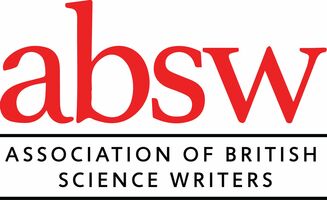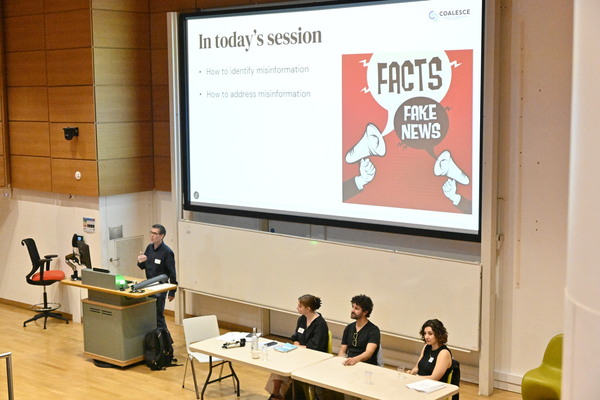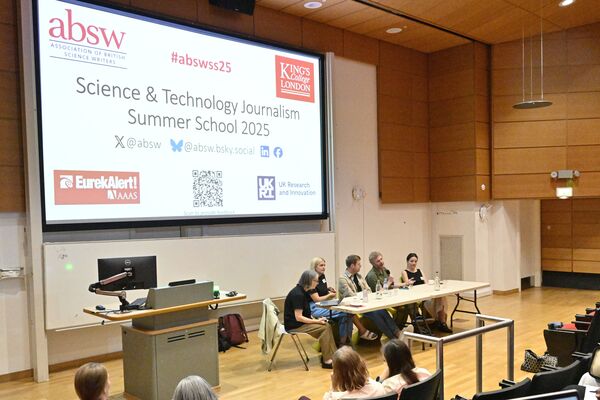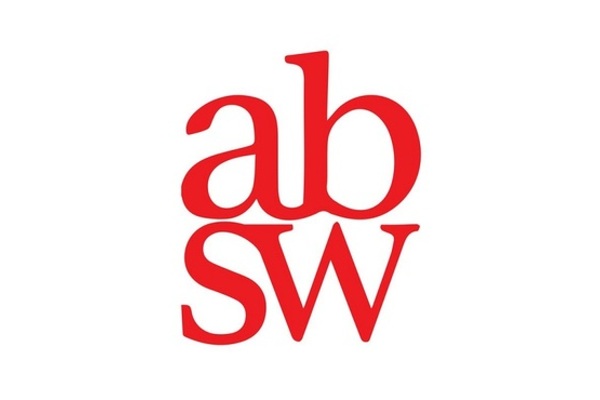Five standout tips:
- Play the long game—publish on a topic widely and repeatedly
- Prebunk—inoculate your audience against common misinformation tactics
- Don’t be part of the problem! Report on science with extreme care
- Choose your experts carefully
- Respond and adapt to new technologies and realities
When people are asked who they trust to tell the truth, journalists are not at the top of their list. Mevan Babakar, News and Information Credibility Lead at Google, highlighted the findings of the IPSOS Veracity Index 2024: just 27% of the public surveyed said that they would trust journalists to tell the truth.
This is discouraging, especially if you’re a science journalist hoping to improve public understanding of science. In fact, scientists themselves rank near the top of the list, with 79% of the public trusting them.
Perhaps, suggested Babakar, science journalists might benefit from some “rubbed-off trust” given their role of communicating information from scientists. Whether or not this is true, it’s clear this role must be handled with great care. Getting it right can help strengthen public trust in both science and science journalism, and cut through false narratives that hamper humanity’s progress on issues like public health or climate change.
What are some practical steps science journalists can take? Below are five standout tips from the panellists of the session "Misinformation—how to spot it and how to counter it", at the ABSW Science & Technology Journalism Summer School 2025.
1. Play the long game—publish on a topic widely and repeatedly
Andy Ridgway, Senior Lecturer in Science Communication at the University of the West of England, shared a key finding from the EU RETHINK study—an individual’s likelihood of believing misinformation largely comes down to their long-held values and beliefs. And how trustworthy they deem a single piece of information depends on how trustworthy they consider the institution that puts it out.
Beliefs can be gradually shifted with time and intensity of exposure, pointed out Jon Roozenbeek, Lecturer in Psychology and Security at King's College London. This has been demonstrated by propaganda campaigns in Nazi Germany—art, music, films, books, and the press were used to flood the German public with antisemitic tropes, creating an atmosphere of acceptance when the Nazis began taking measures to solve the supposed “Jewish Problem”.
Closer to home, there was the extended campaign to portray the British Empire as a force for good in the world, an idea that has yet to fully lose its hold on the British psyche. This was aided by trusted institutions like the BBC broadcasting programmes that portrayed the colonisers as welcome civilisers of otherwise “backwards” cultures. Of course, this is not how they were actually seen by the colonised.
Presumably, this works in reverse too: stories that counter misinformation, when coming simultaneously from many sources (especially trustworthy ones) and/or over a sustained period, can gradually shift the baseline away from false narratives.
So, even if a story on an important topic has already been published (e.g., on the link between global heating and extreme weather events), find another angle, format, and/or outlet, and keep the conversation going. Every little bit of exposure counts.
2. Prebunk—inoculate your audience against common misinformation tactics
Roozenbeek’s research suggests that an effective strategy to counter the spread of misinformation is to “prebunk” rather than just debunk. This means equipping the public to recognise common misinformation tactics, such as the use of emotional language and false dichotomies (he’s co-created some fun videos and games to help with this), as well as promoting media, digital, and data literacy more generally.
It can also mean warning your audience about false narratives that might be circulating about a specific topic, using the “truth sandwich” method: first state the truth, then explain the falsehood and why it’s incorrect, finishing again with the truth. The Open Notebook has a resource with helpful tips.
Related to this is the importance of explaining how science works, rather than just what it says. Journalists often worry that reporting nuances or changes to previous findings will lead to public mistrust. But communicating (again, repeatedly) the scientific inquiry process—that scientific consensus is built over time through constant testing, revision, and collaboration—can protect against this. The Journalist’s Resource has some further advice on this and other strategies.
3. Don’t be part of the problem! Report on science with extreme care
When reporting on controversial topics, breaking news, and potential scare stories, the Science Media Centre (SMC) is an excellent resource. They provide rapid expert reactions and roundups for science journalists that put these stories into context.
Freya Robb, Senior Press Officer at the SMC, shared some further tips to help journalists report science responsibly and build rather than break trust in the profession.
She warned about hype in press releases. Always evaluate the study itself. Is the study published in an academic journal, or is it from a preprint or conference presentation? A non-archival conference paper may never be published, or may be significantly moderated after peer review, while preprints have not undergone any third-party scrutiny at all.
If the paper is published, assess the journal. Have you heard of it? How long has it been around? Does the editorial board consist of known experts in the field? What is the impact factor? And how do other scientists regard it?
And of course, assess the science. What is the size and subject (cells, animals, people) of the study? Has a genuine causal link been established, or are the results just correlational? How does the work fit in with existing evidence? Should the findings change people’s behaviour? If so, be extra wary of potential limitations or overspeculation. Unfortunately, getting a scientific paper published, especially in the most prestigious journals, increasingly requires scientists to use hyped-up language to describe their findings.
No single factor is perfect, but taken together, all these considerations can help journalists avoid misrepresenting or overblowing the findings of a study.
Given that we should be cautious about taking the press release or the study itself at face value, commentary from external experts is of crucial importance, which brings us to the next point.
4. Choose your experts carefully
As noted at the start of this article, scientists in general enjoy a good deal of public trust, so select whose voices you amplify with care.
First, stresses Robb, ensure the scientist you’re speaking to is indeed an expert in the relevant field of study—scientists often like to be helpful and may answer your questions even if it’s not their main area of expertise.
Other questions to ask are: does the scientist work at a credible institution, do they publish in credible journals, and do they collaborate with other respected academics?
Check if and how the scientist has been quoted in the media previously. If you see a scientist quoted on a wide range of different topics, or their comments tend to be extreme or attention-grabbing, this may be a red flag.
Finally, always speak to more than one expert—ideally including a good statistician/methods expert—and feature a diverse range of voices. The Open Notebook and ABSW have a list of databases (here and here) to help journalists find experts from diverse backgrounds.
5. Respond and adapt to new technologies and realities
Babakar closed the session with two issues that are on every journalist’s mind of late—increasing rates of news avoidance and Generative AI.
One way to address the former is Solutions Journalism: reporting positive, constructive stories for society.
In the spirit of this, Babakar described a solution on the horizon to deal with the influx of media-based misinformation exacerbated by Generative AI. In a 2024 report she co-produced, context manipulation around media was identified as the most common source of misinformation.
This can be addressed by providing people with more information around media: watermarking tools to identify AI-generated content, like SynthID, now rolling out across Google AI products; and a secure metadata credentialing standard that captures the history of a piece of digital content, like C2PA. C2PA has buy-in from digital media heavy hitters, including Adobe, Amazon, BBC, Google, Meta, Microsoft, and TikTok, and digital camera manufacturers like Sony, Canon, Fujifilm, and Nikon. These will hopefully become useful tools for journalists, fact-checkers, and the wider public as they are more widely adopted.
Babaker concluded: “In this rapidly changing world, what are our new signals for trust and expertise? We can’t just focus on the negative and the misleading—we also have to make sure good information replaces the bad.”
Picture: "Misinformation - how to spot it and how to counter it" session at the ABSW Summer School 2025. Credits: Mark Lewis Photography/ABSW

Dr Jasmeen Kanwal works at the University of Edinburgh, supporting Data and AI Literacy in schools. She has a background across the sciences, having done research in Physics, Philosophy of Science, Cognitive Science, Linguistics, and Biology. She is now dipping her toes into science writing.
Jasmeen was awarded a Diversity Scholarship 2025.










